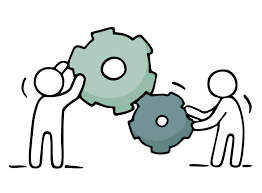How to Give and Receive Feedback in Peer Relationships
Feedback plays a crucial role in personal and professional growth. It helps us understand our strengths, weaknesses, and areas for improvement. When it comes to peer relationships, the way we give and receive feedback can greatly impact the dynamics of the relationship. As AckySHINE, a communication and interpersonal skills techniques expert, I would like to share some valuable advice on how to effectively give and receive feedback in peer relationships.
Be specific and constructive 🎯: When giving feedback, be specific about the behavior or action you are addressing. Instead of saying, "You're always late," say, "I noticed that you arrived 15 minutes late to our meeting yesterday." Also, provide constructive suggestions for improvement, such as "To ensure everyone starts on time, it would be great if you could set an alarm or plan your schedule accordingly."
Choose the right time and place ⏰🏢: Timing is crucial when giving feedback. Find a suitable time and place where both parties can focus and have a private conversation. Avoid giving feedback in front of others, as it can make the person feel embarrassed or defensive.
Use "I" statements 🙋♀️🙋♂️: Instead of using accusatory language, use "I" statements to express your thoughts and feelings. For example, say, "I feel overwhelmed when you assign me additional tasks without prior notice," instead of saying, "You always burden me with extra work."
Active listening 🎧: When receiving feedback, practice active listening. Maintain eye contact, nod to show understanding, and paraphrase to ensure you understood the message correctly. This shows respect and allows for clarity in the conversation.
Separate the person from the behavior 🚶♀️🚶♂️: It's important to remember that feedback is about the person's behavior, not their character. Instead of saying, "You're lazy," say, "I noticed that you haven't been meeting the deadlines lately." This way, you address the issue without attacking the person.
Be open to feedback 🌟: As AckySHINE, I strongly recommend being open to receiving feedback from your peers. It shows that you value their opinions and are willing to grow. Avoid getting defensive or making excuses when receiving feedback. Instead, ask for clarification and reflect on how you can improve.
Provide specific examples 📝: When giving feedback, provide specific examples to support your observations. This helps the person understand the context and visualize the behavior you are referring to. For instance, say, "During the last team project, you missed multiple deadlines, causing delays and affecting team morale."
Sandwich technique 🥪: Use the sandwich technique to deliver constructive feedback. Start with a positive comment or appreciation, then address the area for improvement, and end with another positive comment or encouragement. This approach helps balance the feedback and makes it easier for the receiver to digest.
Respectful language 🙏: As communication and interpersonal skills techniques expert, I strongly advise using respectful language when giving feedback. Avoid using derogatory or offensive language that may harm the person's self-esteem. Choose words that encourage growth and reflection.
Seek permission 🙇♀️🙇♂️: Before giving feedback, ask the person if they are open to receiving it. This shows respect for their boundaries and ensures they are in the right mindset to listen and engage in a productive conversation.
Focus on behavior change 🔄: When giving feedback, focus on the desired behavior change rather than dwelling on past mistakes. Offer suggestions, resources, and support to help the person improve. Remember, the goal is growth and development, not punishment.
Non-verbal cues 👀: Pay attention to non-verbal cues when giving and receiving feedback. Facial expressions, body language, and tone of voice can provide additional insights into how the person is feeling and reacting. Adjust your approach accordingly to ensure effective communication.
Follow-up 📲: After giving or receiving feedback, it's important to follow up. Check in with the person to see if they have any questions or need additional support. This shows your commitment to their growth and maintains open lines of communication.
Practice empathy 🤝: As AckySHINE, I recommend practicing empathy when giving feedback. Put yourself in the other person's shoes and consider their perspective. This helps create a safe and understanding environment where feedback can be received openly.
Seek feedback on your feedback skills 🤔🔄: Finally, as a communication and interpersonal skills techniques expert, I encourage you to seek feedback on your own feedback-giving skills. Ask your peers if they found your feedback helpful and how you can improve your approach. This demonstrates your commitment to growth and continuous improvement in your relationships.
In conclusion, giving and receiving feedback in peer relationships requires effective communication and interpersonal skills techniques. By being specific, constructive, and respectful, we can create an environment that supports personal and professional growth. Remember to listen actively, separate the person from the behavior, and practice empathy. Now, I would love to hear your opinion on these techniques. Have you tried any of these methods in your peer relationships? How did they work for you?




No comments yet. Be the first to share your thoughts!